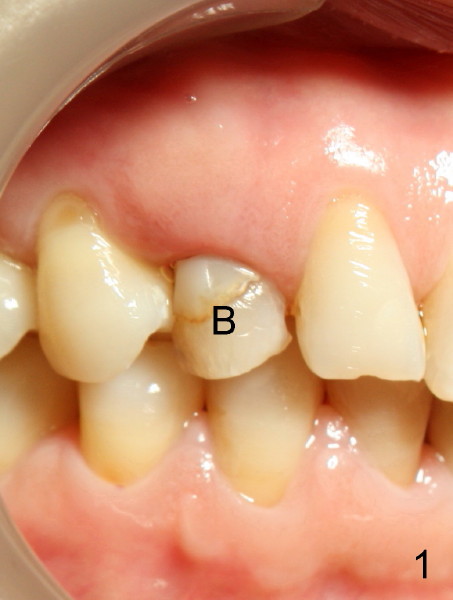
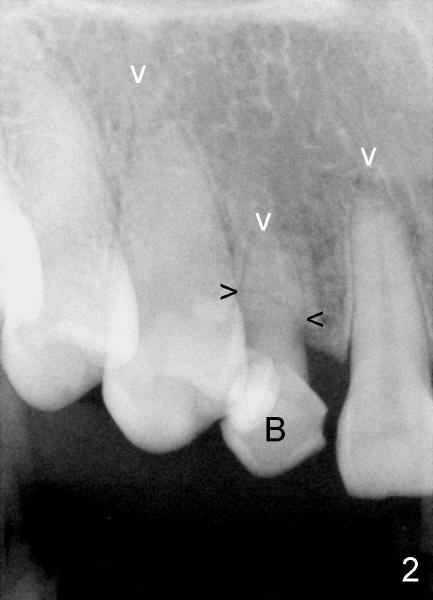
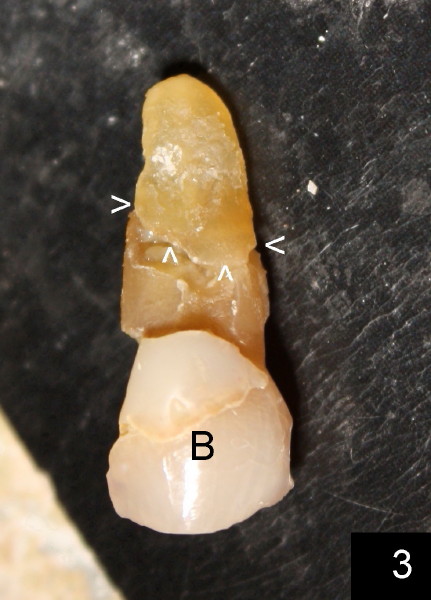
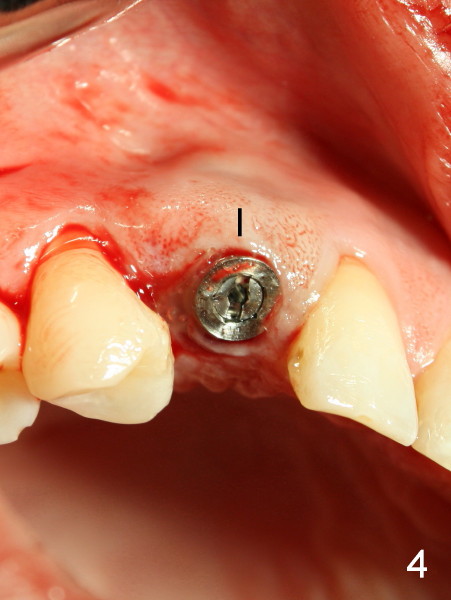
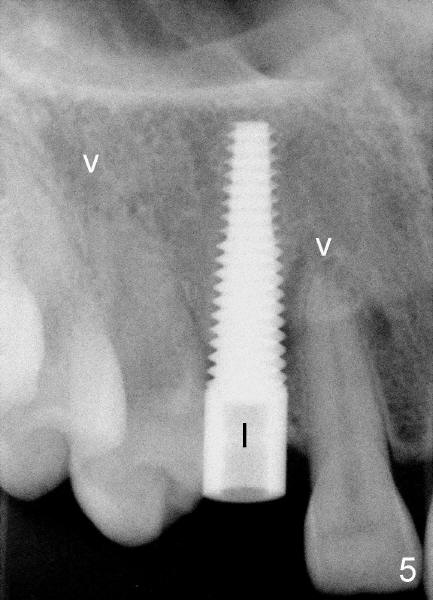
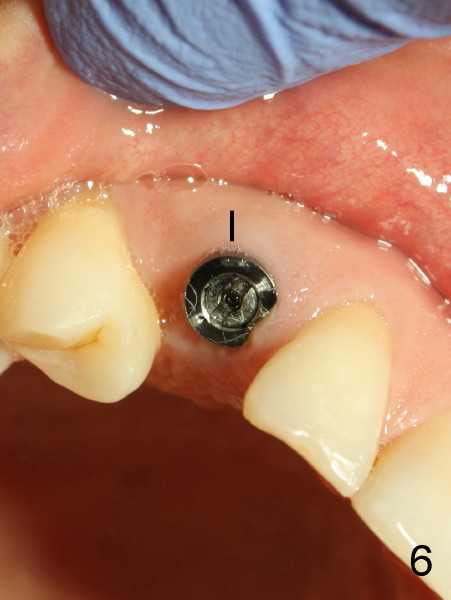
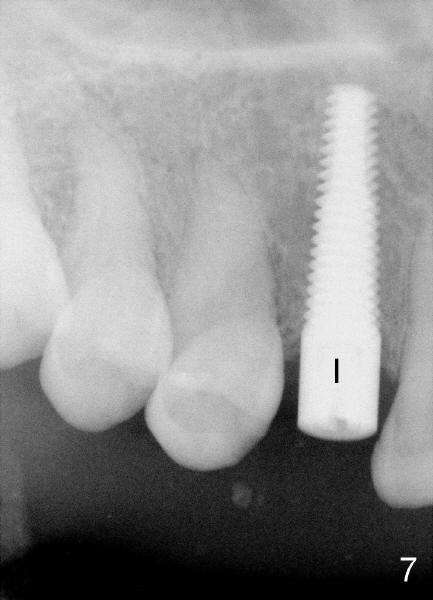
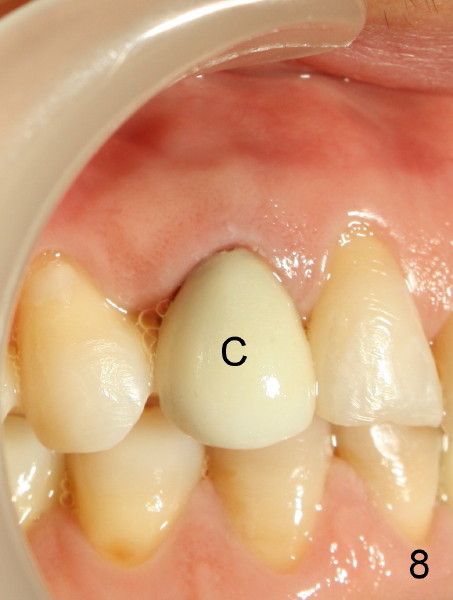
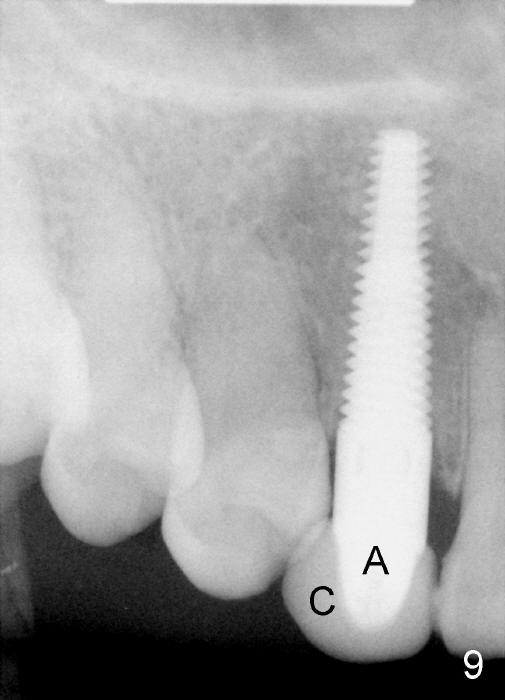
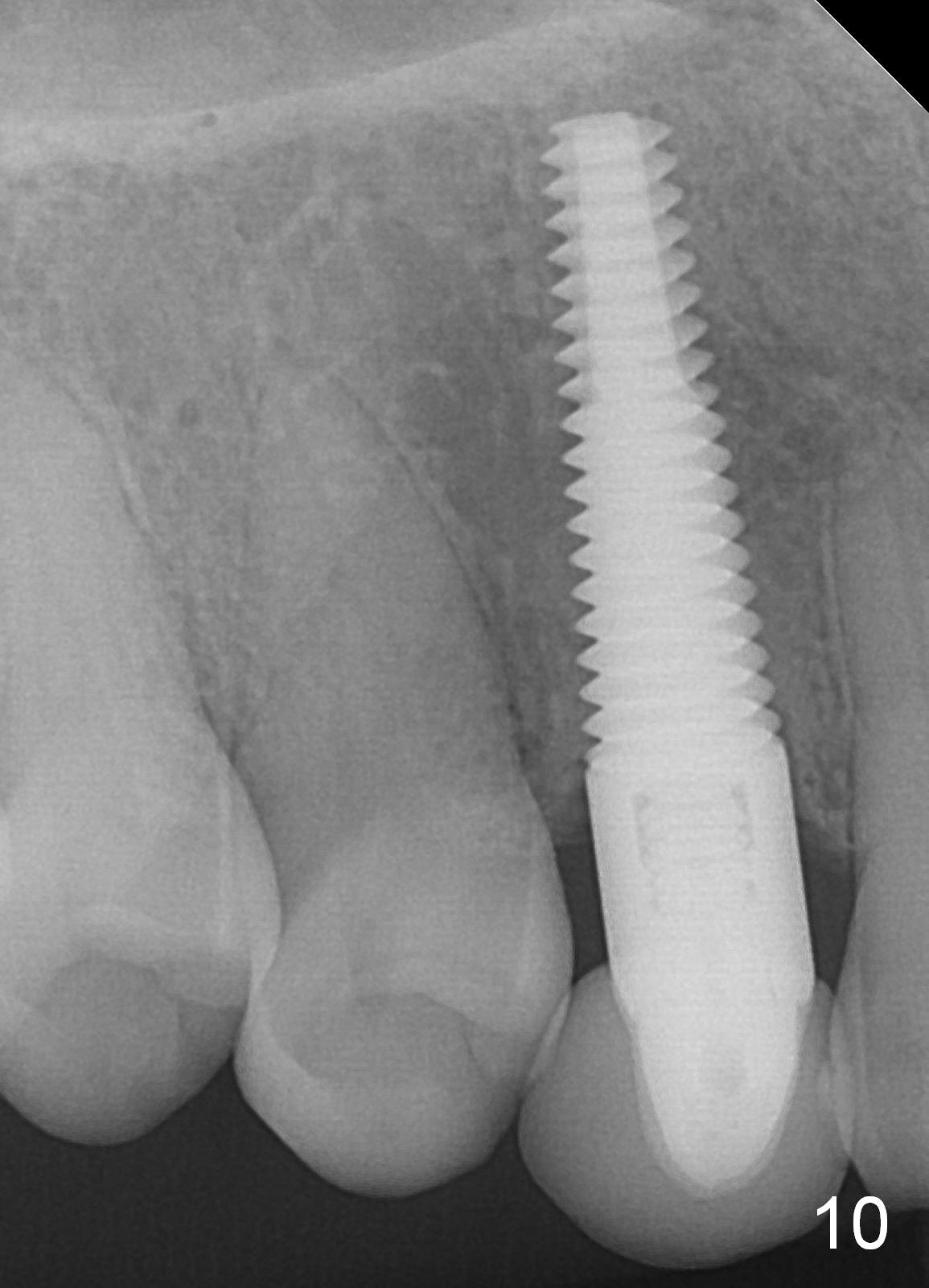
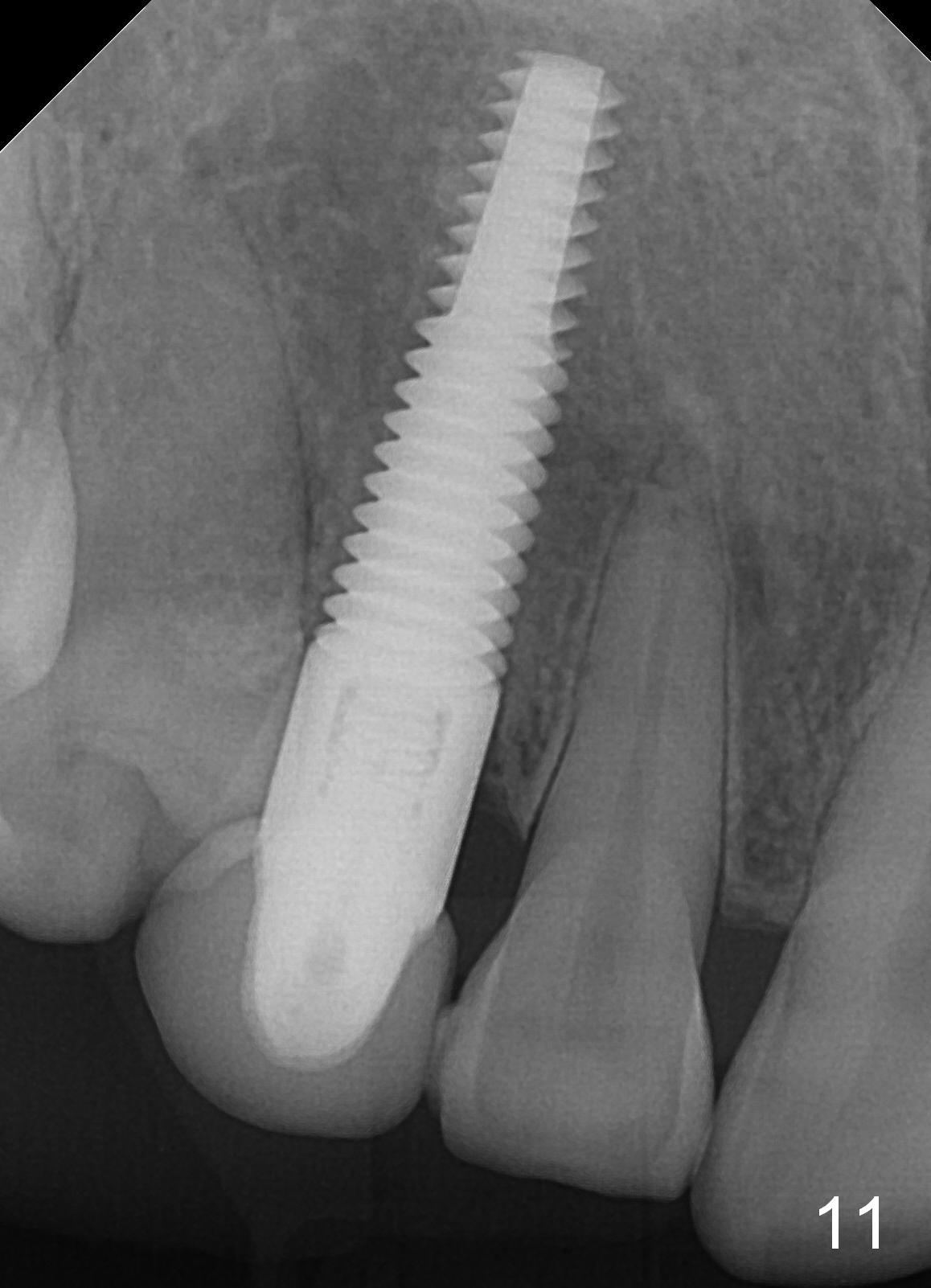
 |
 |
 |
 |
 |
 |
 |
 |
 |
 |
 |
Missing Canine
Ms. Yang does not have an adult canine. Instead the baby canine remains in the mouth for extra 20 years (Fig.1 B). Finally it shows signs of aging. The tooth is grayish. It is mobile. X-ray shows that the root is broken (Fig.2 black arrowheads) and is short, as compared to the neighboring adult teeth's roots (white arrowheads). Anyway, the baby tooth needs to come out (Fig.3; arrowheads point to broken line) and is replaced by an implant immediately (Fig.4,5 I). Now the implant is longer than the roots of the adjacent teeth (Fig.5 arrowheads, as compared to Fig.2).
Ms. Yang is doing great after surgery, although Fig.4 is quite bloody. The implant heals nicely, as shown in Fig. 6, two months afterward. X-ray in Fig.7 is taken 5 months after implant placement. Everything looks good. In the end, Ms. Yang has got a new crown (Fig.8 C). It looks like an adult tooth. She is quite happy. Fig.9 shows a X-ray film taken 2 years 4 months after cementation of the crown (C; A: abutment). The implant tooth is keeping doing great 4 years 8 months after cementation (Fig.10,11). When the left baby canine is falling out, she chooses an implant again.
Xin Wei, DDS, PhD, MS 1st edition 04/03/2012, last revision 12/13/2016